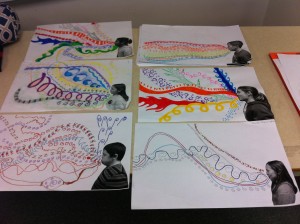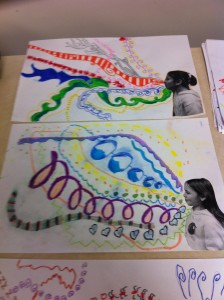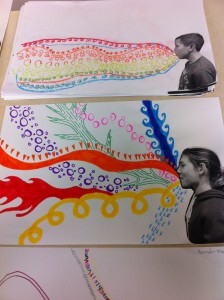Did You Know…? The first postcard sent from the antarctic had a picture of a penguin tethered to the leg of a bagpiper.
Good evening,
Today we started off with a Social Studies lesson. Students completed their study of the Appalachian Region today. They worked in groups to write and answer quiz questions about what they have learned. On Monday, students will work through the compiled quizzes and review the Unit. On Wednesday we will be having a small quiz on the information learned. Student have focused on the landforms/bodies of water, natural resources, climate, and how people live within the regions. We have discussed the provinces of the Appalachian Region (primarily Newfoundland, Nova Scotia, New Brunswick, and Prince Edward Island). We looked at the similarities and differences in available natural resources within these provinces. We discussed the effects glaciers have had on the creation the landscape (this handy video and a fun experiment helped us!):
We discussed some of the severe weather (such as hurricanes) that can be experienced in this region, and how the Mi’kmaq First Nations peoples used the climate to create calendars and to carefully plan their lives. We’re really excited to have students share with us what they have learned. Great job everyone!
In Art today, students looked at line. Specifically, we were looking at how we can use a variety of lines (eg. thick, small) but also shapes, words, etc. to create the illusions of line, by following a clear and direct path. Students used these concepts to create the creative images seen below. Well done everyone!
In Science, students continued to research clouds. Students were asked the following questions:
- What do clouds look like?
- What weather patterns are associated with clouds?
- Where are clouds located in the atmosphere?
Students have been working in small groups with the IPads to research the answers to these questions. They will be creating display posters next week with visuals about the types of clouds they have been studying. They have been asked to specifically focus on nimbus, cumulus, stratus, and cirrus clouds. Don’t forget everyone, clouds are also mentioned in our Water Cycle song from earlier lessons (see the Sept-Oct Links on the right)!
Agenda:
Read 20 minutes
Math:
- pgs. 55-56 #1-9, 11, 12
- Extra Workbook Lesson #3
Ski Forms – due ASAP



